Incorporating hanging plants into your home decor is a fantastic way to elevate your living space. From air purification to mood enhancement, the benefits of these verdant wonders are undeniable. Discover the best hanging plants for home and learn how to care for them to create a vibrant and inviting ambiance.
Hanging plants add a touch of greenery and freshness to any room. They can purify the air, reduce stress, and improve your overall well-being. With so many varieties available, you’re sure to find the perfect plants to complement your home’s style and needs.
Varieties of Hanging Plants for Indoor Decor
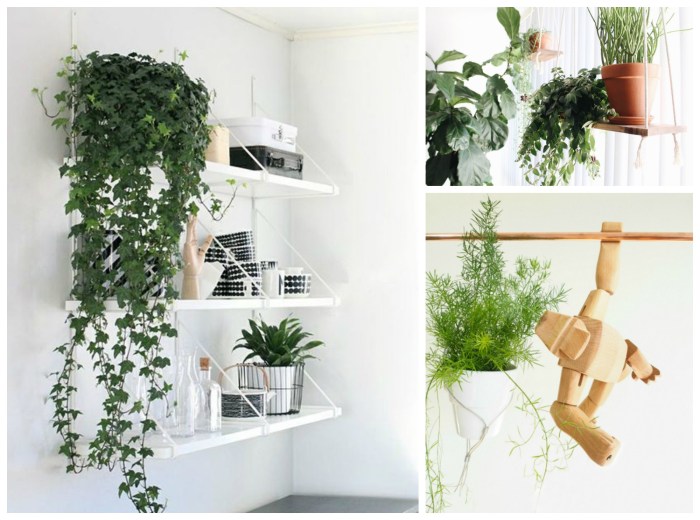
Hanging plants have become increasingly popular in home decor due to their ability to add greenery and vibrancy to any space. They offer a unique way to showcase plants and create a more inviting atmosphere. When selecting hanging plants for your home, there are several varieties to choose from, each with its own unique characteristics and care requirements.
Types of Hanging Plants
There are various types of hanging plants suitable for indoor decor. Some of the most popular options include:
- Spider plants:Known for their long, trailing leaves, spider plants are easy to care for and can tolerate a wide range of light conditions.
- Pothos:With heart-shaped leaves that come in various colors, pothos plants are known for their ability to purify the air.
- String of pearls:This unique plant features succulent-like leaves that resemble strings of pearls.
- Ferns:Ferns add a touch of elegance to any space and come in a variety of sizes and shapes.
- Air plants:These unusual plants do not require soil and can be displayed in a variety of ways, such as on driftwood or in glass terrariums.
When selecting hanging plants, consider the amount of light your space receives, the size of the plant you desire, and the level of care you are willing to provide.
Care and Maintenance of Hanging Plants
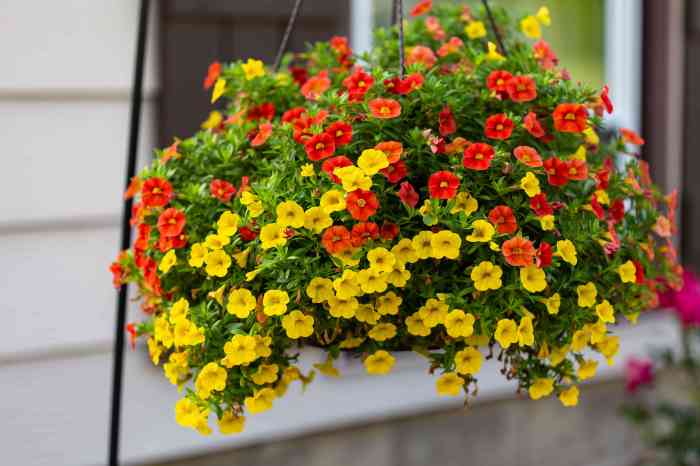
Nurturing hanging plants demands specific attention to their unique growth patterns and environmental needs. Understanding their water, light, and nutrient requirements, along with effective pest and disease management, is crucial for maintaining their health and visual appeal.
Watering
Hanging plants, with their elevated position, tend to dry out more quickly than their grounded counterparts. Regular watering is essential, ensuring the soil remains moist but not waterlogged. Allow the top inch of soil to dry between waterings, and adjust frequency based on the plant’s specific needs and the surrounding environment.
Lighting
Light requirements vary among hanging plants. Assess the plant’s natural habitat and provide appropriate lighting conditions. Some prefer bright, indirect light, while others thrive in shaded areas. Insufficient light can hinder growth and lead to leggy, weak stems, while excessive light can scorch leaves and cause dehydration.
Fertilization
Regular fertilization provides essential nutrients for healthy growth. Use a balanced, water-soluble fertilizer diluted to half strength during the growing season. Avoid over-fertilizing, as it can lead to salt buildup and root damage. Follow the manufacturer’s instructions carefully to determine the appropriate frequency and dosage.
Pest and Disease Management
Hanging plants are susceptible to pests and diseases, just like other indoor plants. Regular inspection and prompt treatment are vital. Common pests include aphids, mealybugs, and spider mites, while diseases may include powdery mildew, root rot, and fungal infections. Use insecticidal soap or neem oil to combat pests, and address diseases with appropriate fungicides or by adjusting environmental conditions.
Pruning and Shaping
Pruning and shaping help maintain the desired size and shape of hanging plants. Remove dead or damaged leaves and stems to promote healthy growth. Pinch back trailing stems to encourage bushier growth. Regular pruning also prevents the plant from becoming too heavy and minimizes the risk of breakage.
Designing with Hanging Plants
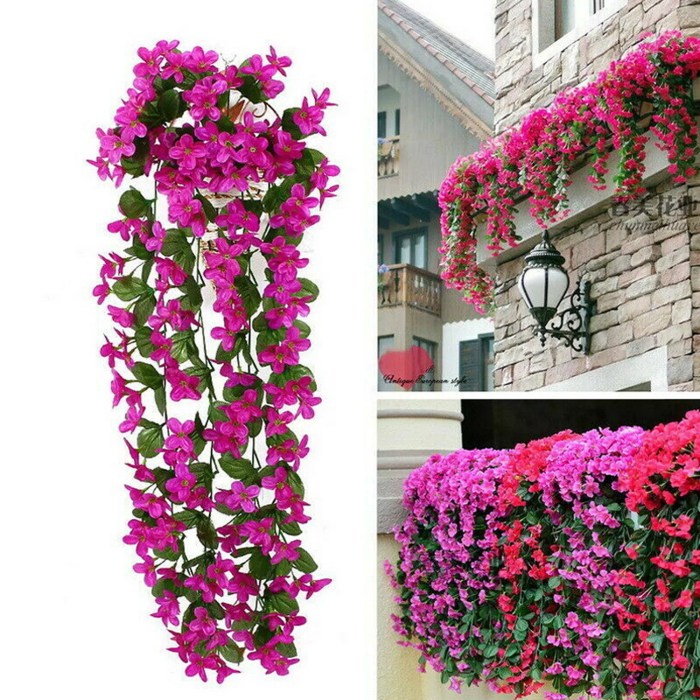
Hanging plants are a versatile and stylish way to add greenery and life to your home. They can be used to create vertical gardens, add a touch of nature to any room, or simply provide a splash of color. When incorporating hanging plants into your home decor, there are a few things to keep in mind.
First, consider the size and shape of the plant. Larger plants will need more space, so be sure to choose a pot that is large enough to accommodate the roots. Smaller plants can be grouped together in a hanging basket or macrame hanger.
Hanging plants are a great way to add life and color to your home, and they can also help to purify the air. If you’re looking for a hanging plant for your kitchen, there are a few things to keep in mind.
First, you’ll want to choose a plant that is tolerant of humidity and heat, as kitchens can be warm and humid environments. Second, you’ll want to choose a plant that is relatively easy to care for, as you may not have a lot of time to spend on maintenance.
A good option for a best hanging plant for kitchen is the pothos plant. Pothos plants are tolerant of a wide range of conditions, and they are also very easy to care for. They can be grown in either bright or indirect light, and they only need to be watered when the soil is dry to the touch.
Other great hanging plants for the home include the spider plant, the peace lily, and the philodendron.
Next, think about the light conditions in the room where you want to hang the plant. Most hanging plants prefer bright, indirect light, but some can tolerate lower light conditions. Be sure to research the specific plant you choose to make sure it will thrive in your home.
Vertical Gardens
Vertical gardens are a great way to add greenery to small spaces or to create a living wall. They can be made using a variety of materials, such as pallets, wood, or metal. To create a vertical garden, simply attach the plants to the structure using hooks, wire, or zip ties.
You can use a variety of plants in your vertical garden, but be sure to choose plants that are compatible with each other in terms of their light and water needs.
To add a touch of greenery to your home, consider hanging plants. They are a great way to save space and add a bit of life to any room. For the bedroom, consider a bedroom plant hanger to create a relaxing atmosphere.
When choosing the best hanging plants for your home, opt for varieties that are known for their air-purifying qualities, such as spider plants, peace lilies, or ferns.
Hanging Plant Displays
Hanging plant displays are a great way to add a touch of nature to any room. They can be used to create a focal point, add height to a space, or simply provide a splash of color. When creating a hanging plant display, be sure to use a variety of plants with different textures and colors.
You can also add other elements to your display, such as candles, books, or artwork.
Statement Pieces
Hanging plants can also be used as statement pieces in a room. A large, trailing plant can make a dramatic impact in a living room or entryway. A group of smaller plants can be used to create a unique and eye-catching display.
When using hanging plants as statement pieces, be sure to choose plants that are healthy and have a strong visual impact.
Hanging plants can bring life and beauty to any home. For those looking to add some greenery to their space but don’t have a lot of natural light, best hanging low light plants are a great option. These plants can thrive in low light conditions, making them perfect for rooms with north-facing windows or areas with limited sunlight.
Whether you’re looking for a trailing plant to add a touch of elegance to your living room or a lush fern to brighten up your bathroom, there are plenty of best hanging plants for home that will thrive in low light conditions.
Benefits of Hanging Plants in the Home: Best Hanging Plants For Home
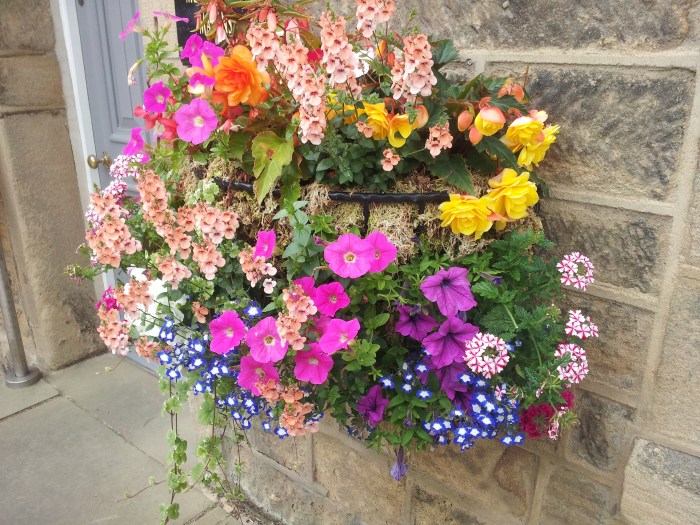
Hanging plants are becoming increasingly popular for home decor, and for good reason. Not only do they add a touch of greenery and life to any space, but they also offer a number of benefits for your health and well-being.
Air Purification
One of the most well-known benefits of hanging plants is their ability to purify the air. Studies have shown that certain plants, such as spider plants, peace lilies, and English ivy, can remove harmful toxins from the air, including benzene, formaldehyde, and trichloroethylene.
These toxins are commonly found in household products such as cleaning supplies, paint, and furniture, and can cause a variety of health problems, including respiratory issues, headaches, and fatigue.
Psychological Benefits, Best hanging plants for home
In addition to their air-purifying qualities, hanging plants have also been shown to have a number of psychological benefits. Studies have shown that being around plants can reduce stress, improve mood, and boost creativity. Plants can also help to create a more calming and relaxing atmosphere in the home, which can be beneficial for people who suffer from anxiety or depression.
Aesthetic Benefits
Of course, hanging plants also offer a number of aesthetic benefits. They can add a touch of color and life to any room, and they can be used to create a variety of different looks. For example, hanging plants can be used to create a lush, tropical atmosphere in a living room, or they can be used to add a touch of elegance to a bedroom.
DIY Projects with Hanging Plants
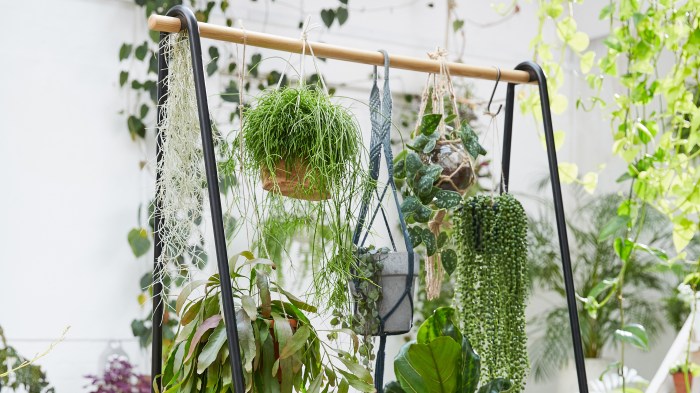
With the growing popularity of indoor greenery, DIY hanging plant projects have become a creative and affordable way to add a touch of nature to your home. From repurposing everyday items to crafting unique macrame designs, there are endless possibilities for creating custom hanging planters that complement your personal style and enhance the ambiance of your living space.
Custom Hanging Planters
Using materials such as wood, metal, or fabric, you can create one-of-a-kind hanging planters that showcase your creativity. For a rustic touch, consider using reclaimed wood to build a simple box planter with a rope handle. Alternatively, upcycle a metal colander or basket by adding chains or wire for suspension.
For a more bohemian vibe, use macrame cord to weave an intricate planter that adds texture and interest to your decor.
Repurposing Everyday Items
Transform everyday objects into charming hanging plant displays. An old teacup can be repurposed as a miniature planter by drilling a small drainage hole in the bottom. Suspend it from a hook or twine for a whimsical touch. A wire basket can be used to create a vertical garden by lining it with sphagnum moss and inserting small plants.
Repurposing items like these not only saves money but also adds a unique and personal touch to your home.
Hanging Plant Wall or Macrame Plant Hanger
Create a living wall of greenery by designing a hanging plant wall. Arrange a series of planters on a wall-mounted grid or use a combination of shelves and hooks to display your plants at different heights. For a more elaborate touch, craft a macrame plant hanger using intricate knots and patterns.
These hangers not only add a bohemian aesthetic to your space but also provide a stylish way to display your favorite plants.
Conclusive Thoughts
Whether you’re a seasoned plant enthusiast or just starting your indoor gardening journey, hanging plants are a beautiful and rewarding addition to your home. Their versatility and ease of care make them a great choice for any space, bringing a touch of nature and a wealth of benefits to your daily life.
Questions and Answers
What are the most popular hanging plants?
Some of the most popular hanging plants include pothos, spider plants, and ferns. These plants are known for their hardiness and ability to thrive in a variety of conditions.
How often should I water my hanging plants?
The frequency of watering will vary depending on the type of plant and the conditions in your home. As a general rule, water your plants when the soil feels dry to the touch.
How can I create a hanging plant display?
There are many ways to create a hanging plant display. You can use macrame hangers, wall-mounted planters, or even repurposed items like baskets or jars.